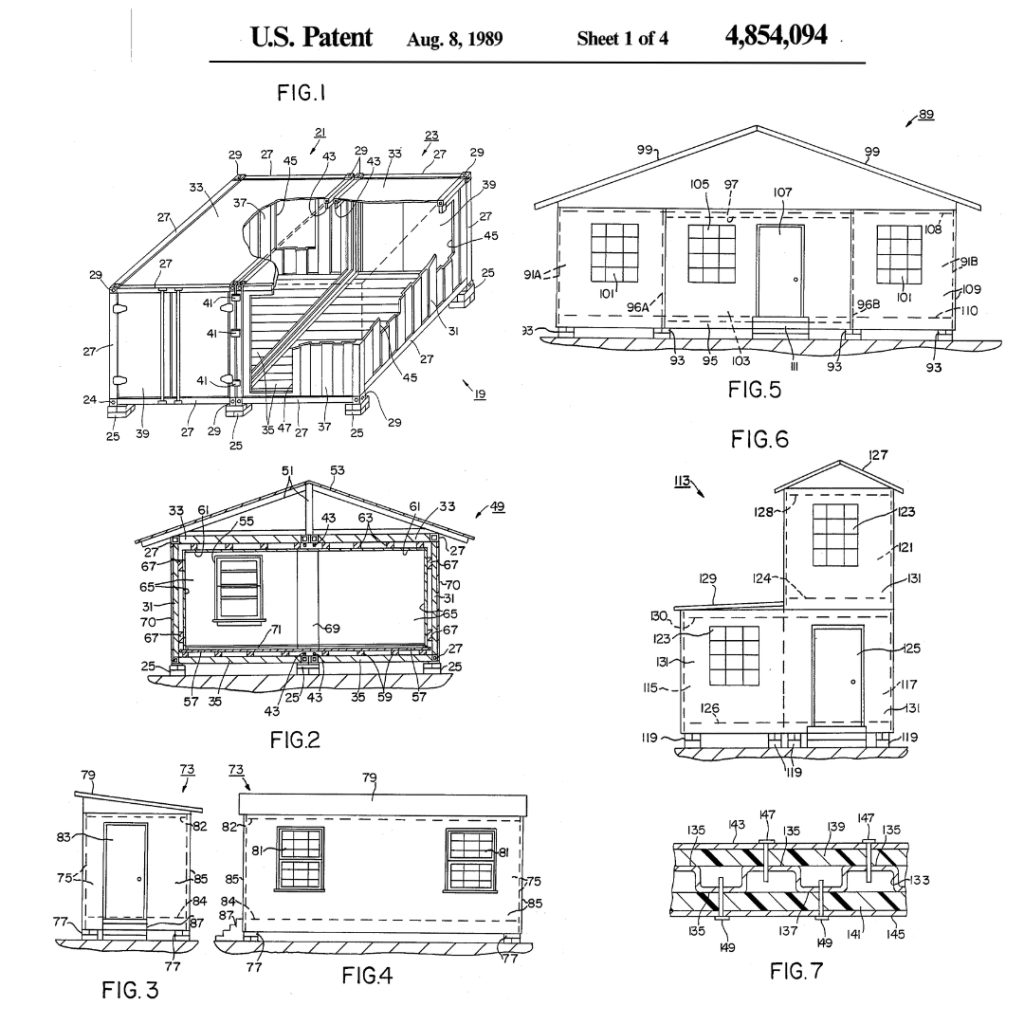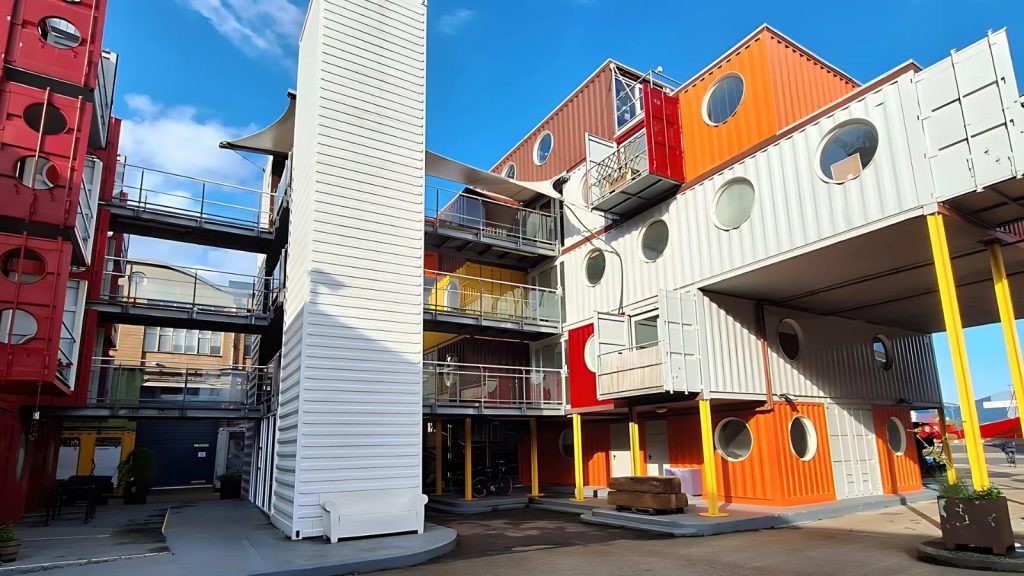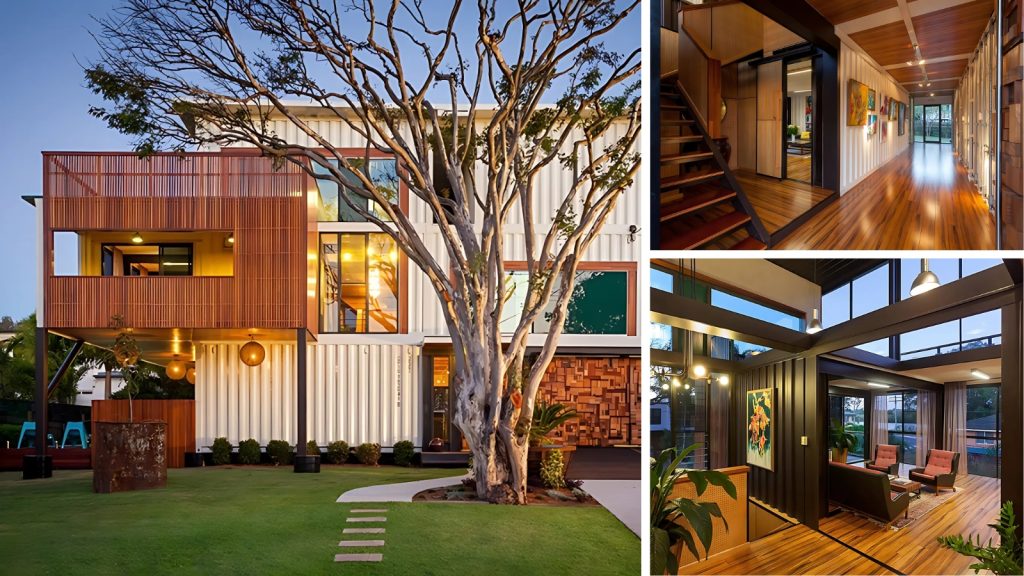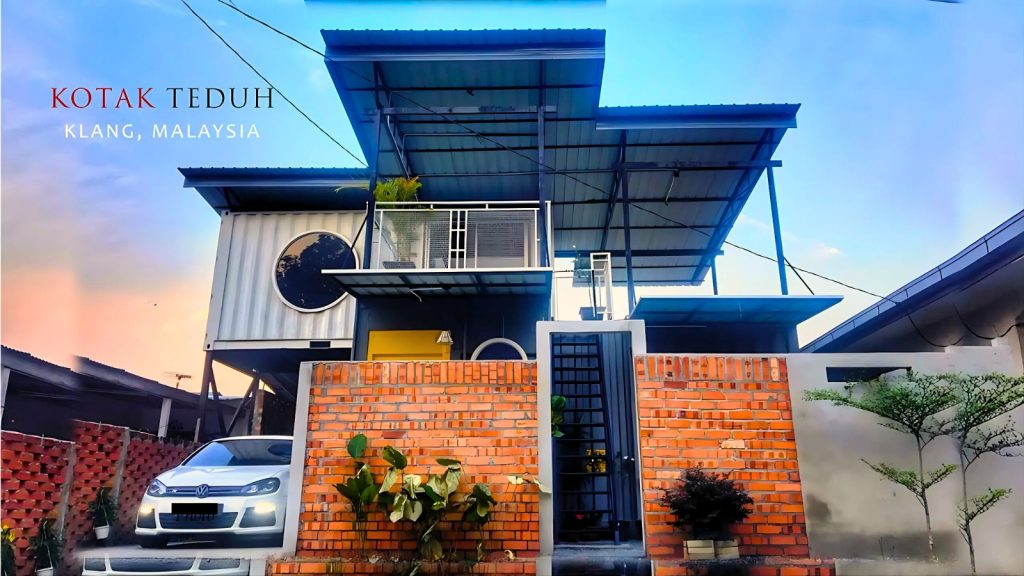Origins of the Shipping Container Home Concept
The concept of repurposing shipping containers into habitable spaces has evolved over several decades. In 1987, Phillip Clark filed a patent for converting steel shipping containers into habitable buildings, marking one of the earliest formal recognitions of this idea. His patent, granted in 1989, detailed methods for transforming containers into liveable spaces.

Prior to Clark’s patent, innovative uses of shipping containers had already begun to surface. In 1985, the film “Space Rage” featured sets constructed from shipping containers, showcasing their potential beyond traditional cargo transport.
The 1990s saw further exploration into container architecture. In 1994, Stewart Brand’s book “How Buildings Learn” discussed converting shipping containers into office spaces, contributing to the growing interest in alternative building methods.

Addressing Modern Housing Challenges with Container Homes
Today’s housing landscape faces several challenges, including affordability, sustainability, and rapid urbanisation. Shipping container homes offer potential solutions to these issues:
- Affordability: Utilising decommissioned shipping containers can reduce construction costs, making homeownership more accessible.
- Sustainability: Repurposing containers promotes recycling and reduces the demand for traditional building materials, aligning with eco-friendly practices.
- Efficiency: The modular nature of containers allows for quicker construction times, addressing the need for rapid housing solutions in densely populated areas.
Essentials for Constructing a Container Home
Building a shipping container home involves several key considerations:
- Design and Planning: Develop a comprehensive design that maximizes space and functionality.
- Site Preparation: Ensure the chosen location is suitable, with proper foundation work to support the container structure.
- Insulation and Ventilation: Install appropriate insulation to manage temperature fluctuations and incorporate ventilation systems to maintain air quality.
- Utilities Integration: Plan for the installation of plumbing, electrical, and sewage systems, ensuring compliance with local building codes.
- Permits and Regulations: Obtain necessary permits and ensure the construction adheres to local zoning laws and building regulations.
Real-World Examples of Container Homes
Several projects worldwide exemplify the versatility of shipping container architecture:
Container City, London
Initiated in 2001, this project transformed shipping containers into affordable workspaces and studios, highlighting the potential for urban development. en.wikipedia.org

Graceville Container House, Australia
After losing their home to a flood in 2012, Todd and Di Miller constructed a 6,000-square-foot residence using 31 shipping containers, demonstrating resilience and innovation in homebuilding. containerone.net

Kotak Teduh Container House, Malaysia
Located in Meru, Klang, this modern container home showcases sustainable living solutions within a tropical climate. youtube.com

Challenges in Implementing Container Homes
While shipping container homes offer numerous benefits, several challenges must be addressed:
- Structural Modifications: Altering containers for windows, doors, and interior spaces can compromise structural integrity if not done correctly.
- Insulation Needs: Containers require effective insulation to manage heat and condensation, especially in varying climates.
- Building Codes and Permits: Navigating local regulations can be complex, as container homes may not fit traditional building classifications.
- Toxic Materials: Some containers may have been treated with hazardous chemicals, necessitating thorough inspection and remediation.
Practicality of Container Homes in Malaysia
In Malaysia, the interest in container homes is growing due to their affordability and adaptability. Companies like Kinosaki Homes specialise in prefabricated container houses, offering solutions tailored to the local climate and lifestyle.
The cost-effectiveness of container homes is particularly appealing in Malaysia’s housing market. Estimates suggest that constructing a container home can be significantly cheaper than traditional housing, with prices starting as low as RM50,000.
However, potential homeowners must consider factors such as proper insulation to combat the tropical heat and ensuring compliance with local building codes. Collaborating with experienced builders familiar with container architecture can help navigate these challenges effectively.
In conclusion, shipping container homes present a viable and innovative housing solution in Malaysia, addressing affordability and sustainability. With careful planning and consideration of local conditions, container homes can offer a unique and practical living experience.


